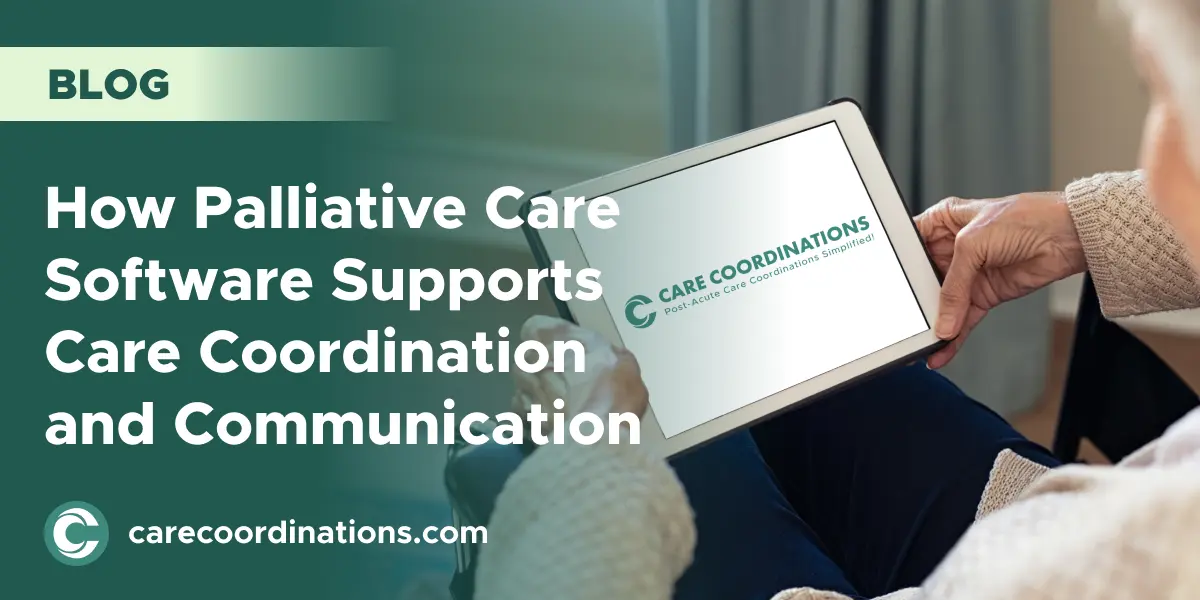Palliative care plays a crucial role in managing patients with serious illnesses, focusing on providing relief from symptoms and stress. Effective coordination and communication among healthcare providers are essential for comprehensive palliative care. With the advent of palliative care software, healthcare teams can enhance care coordination and communication, ensuring better patient outcomes and satisfaction.
Understanding Palliative Care Software
Palliative care software is a specialized solution designed to manage and streamline the processes involved in palliative care. Key features include electronic health records (EHR), patient management systems, and communication platforms that facilitate the seamless exchange of information among healthcare providers.
Types of Palliative Care Software:
• Electronic Health Records (EHR): EHR systems store comprehensive patient information, allowing healthcare providers to access and update patient records in real time. Software should ensure that all team members have up-to-date information, improving the quality of care.
• Patient Management Systems: These systems help manage patient information, appointments, medication schedules, and more. They provide a holistic view of the patient's care plan, ensuring nothing is overlooked.
• Communication Platforms: These tools facilitate secure messaging, video conferencing, and collaboration among healthcare teams, ensuring timely and effective communication.
Also Read: Transforming Chronic Care Management Through Mental Health Integration
Benefits of Palliative Care Software
Enhancing Care Coordination:
• Centralized Patient Information: Palliative care software solutions centralize all patient data, reducing the risk of information silos. This centralization ensures that every member of the care team has access to the same information, promoting coordinated care.
• Real-Time Updates and Access: With real-time updates, healthcare providers can access the latest patient information anytime, enabling timely interventions and adjustments to care plans.
• Integration with Other Healthcare Systems: Palliative care software can integrate with other systems, such as pharmacies, laboratories, and hospitals. This integration allows for a holistic approach to patient care, ensuring that all aspects of the patient's health are considered.
Improving Communication:
• Secure Messaging and Communication Tools: Secure messaging platforms ensure that sensitive patient information is shared safely among care team members. These tools facilitate quick and effective communication, enhancing the overall care process.
• Video Conferencing Capabilities: Video conferencing tools enable remote consultations, allowing healthcare providers to communicate with patients and their families without needing physical visits. It is particularly beneficial for patients with mobility issues or those living in remote areas.
• Collaboration Among Healthcare Teams: Palliative care software supports collaboration by providing platforms where team members can share information, discuss care plans, and coordinate efforts. This collaborative approach ensures comprehensive and cohesive care for patients.
Key Features of Effective Palliative Care Software
Patient Management:
• Comprehensive Patient Records: Detailed patient records are essential for effective palliative care. Palliative care software maintains comprehensive records, including medical history, treatment plans, and progress notes.
• Scheduling and Appointment Management: Automated scheduling systems streamline appointments, reducing the risk of missed visits and ensuring that patients receive timely care.
• Medication Tracking and Reminders: Medication tracking features help manage patients' medication schedules, ensuring adherence and reducing the risk of errors.
Data Analytics and Reporting:
• Monitoring Patient Outcomes: Data analytics tools monitor patient outcomes, providing insights into the effectiveness of care plans. This information helps healthcare providers make informed decisions and adjustments to treatment strategies.
• Identifying Trends and Patterns: By analyzing patient data, palliative care software can identify trends and patterns that may not be immediately apparent. This information can be used to improve care strategies and patient outcomes.
• Generating Reports for Better Decision-Making: The ability to create detailed reports helps healthcare providers make data-driven decisions, enhancing the overall quality of care.
Customization and Scalability:
• Adaptability to Different Care Settings: Palliative care software solutions are adaptable to various care environments, from hospitals to home care settings. This flexibility ensures that the software meets the specific needs of different healthcare providers.
• Customizable Workflows and Templates: Customizable workflows and templates allow healthcare providers to tailor the software to their specific processes, enhancing efficiency and effectiveness.
• Scalability for Growing Healthcare Needs: As healthcare organizations grow, palliative care software can scale to meet increasing demands, ensuring that the software continues to support high-quality care.
Also Read: Care Coordination and Quality Data: Key Factors in Growing Hospice Referrals
Challenges and Considerations
• Data Privacy and Security Concerns: Ensuring the privacy and security of patient data is crucial in healthcare. Palliative care software must comply with stringent data protection regulations and implement robust security measures to protect sensitive information.
• Training and Adoption by Healthcare Staff: Implementing new software requires training healthcare staff to use it effectively. Organizations must invest in comprehensive training programs to ensure that staff are comfortable with the software and can utilize it to its full potential.
• Cost and Budget Constraints: The initial cost of implementing palliative care software can be a barrier for some organizations. However, the long-term benefits, such as improved efficiency and patient outcomes, often justify the investment. Organizations should explore various pricing models and seek solutions that offer the best value for their budgets.
Future Trends in Palliative Care Software
• Integration with AI and Machine Learning: Artificial intelligence (AI) and machine learning are set to revolutionize palliative care software. These technologies can provide predictive analytics, identify at-risk patients, and suggest personalized care plans, enhancing the overall quality of care.
• Increased Use of Telehealth Services: Telehealth is becoming increasingly important in palliative care, especially for remote consultations and follow-ups. Palliative care software that integrates telehealth services will be essential for providing comprehensive and accessible care.
• Innovations in Patient Engagement Tools: New tools and technologies are emerging to enhance patient engagement. These include mobile apps, patient portals, and remote monitoring devices, which can be integrated with palliative care software to provide a more engaging and supportive care experience.
Also Read: Enhanced Primary Care Follow-Up Through the Care Coordination Model
Explore Our Palliative Care Software for Enhanced Coordination and Communication
Palliative care software solutions offer numerous benefits, including enhanced care coordination, improved communication, and efficient management of patient information. These tools are crucial in delivering high-quality palliative care, ensuring better patient outcomes and satisfaction.
As healthcare organizations continue to adopt and innovate with palliative care software, the future of palliative care looks promising, with improved accessibility, personalization, and effectiveness.


